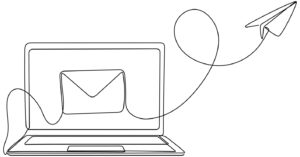A comms pro’s guide to writing with numbers
Percentages and fractions and decimals, oh my!

Writing about numbers is one of the most important – yet trickiest – skills for any communications pro. It’s easy to get lost in strings of overly-specific numbers, misleading statistics and other pitfalls.
So let’s brush up on some of these basic number writing skills, courtesy of that communicators’ Bible, the AP Stylebook. As always, adjust based on your in-house rules.
- Don’t include every number.
It’s tempting to write out every decimal to five places and shove every digit into one paragraph. But unless you’re working on an earnings report, ESG or other communique that requires specificity for legal reasons, aim for clarity over maximum precision. In most cases, it’s OK to round to a whole number, especially if it’s an item like a percentage. You also want to try to limit the proximity between numbers in prose, lest your writing become a soup of digits. AP recommends keeping it to eight to 10 in a single paragraph, but read it for yourself and decide what makes sense for your audience.
- Mix up how you describe numbers.
Two-thirds, 2/3, two-in-three and 66% are all ways of describing the same number. Don’t be afraid to find synonyms for numbers just as you would for words that are becoming monotonous. Some formulations also can make numbers seem more real – for instance, saying that three out of four dentists prefer this toothpaste makes it more concrete than saying 75%.
- Include explanations for numbers.
If numbers could stand on their own, they’d just be a graph. If you’re writing about them, odds are you need to add context to them. This could mean including sample sizes for surveys, confidence intervals or margins or error, or just being clear about what period a data set was gathered in. Be as clear and honest with your audience as possible to give them the best understanding of your data.
- Don’t lie with percentages.
Be inherently skeptical of percentages that come without raw numbers. It might sound impressive to say that your web traffic went up 1,000%,but if you only had one visitor the month before, that’s a lot less impressive. Don’t use percentages to describe small numbers and sample sizes. While you’re at it, don’t confuse percent change and a percentage point change: an increase of 10% to 13% is a 3 percentage point increase, but a 30% increase.
- Data visualization
Charts, graphs and tables are a fantastic way to complement your words and make it easy to understand how numbers compare at a glance. Make sure you’re using the right type for the data you have – pie charts are best for percentages, line graphs for change over time, etc.. Be sure you have both your X and Y axis clearly labeled and on a scale that makes sense for the data. Don’t over-exaggerate change by using a narrow scale.
- Style reminders
AP style lightning round:
- In a relatively recent change, AP now uses % in most instances where a number is used and not the word percent. Do still spell out the word if it’s used in a colloquial sense, such as “zero percent chance.”
- In most cases, you should round decimals to two places. If the number is less than one, start with a 0, such as: 0.25.
- In most cases, spell out fractions that are less than one: three-fourths. If it’s larger than one, convert it to a decimal if If you do need to use a fraction that’s more than one, there should be a space between the numeral and the fraction: 2 2/3.
- Numbers nine and under should generally be spelled out, while 10 and above should use numerals. However, there are a ton of exceptions to this rule, including: measurements of depth, height, length, width, distance, time and temperature; money; odds, proportions and ratios; centuries; sports scores; the list goes on. Additionally, you should not start a sentence with numerals, but instead spell it out. If that number is unwieldy, it might be best to rewrite the sentence to avoid starting with it.
When in doubt, look it up.








This should be required reading for every PR major. Modern students are number-averse. I tried to teach the difference between percent change and percent point change, and they flipped out. On my evaluation, one said they “didn’t know there would be math.” Great story.